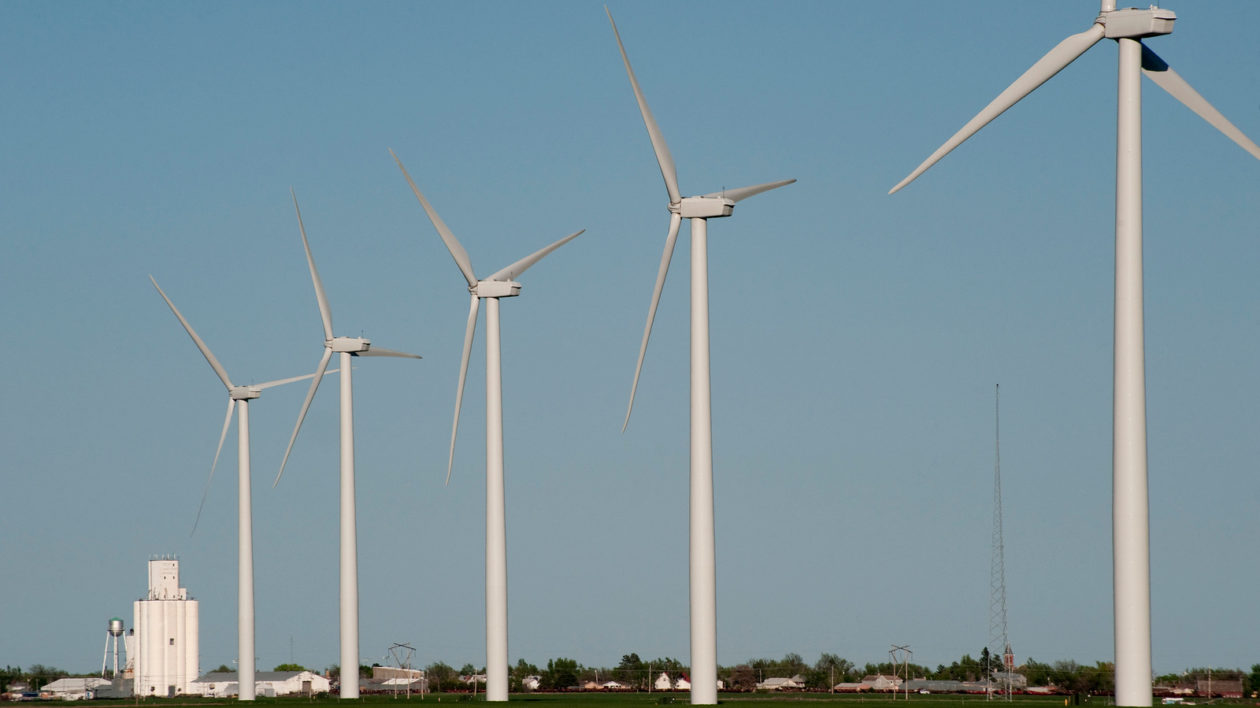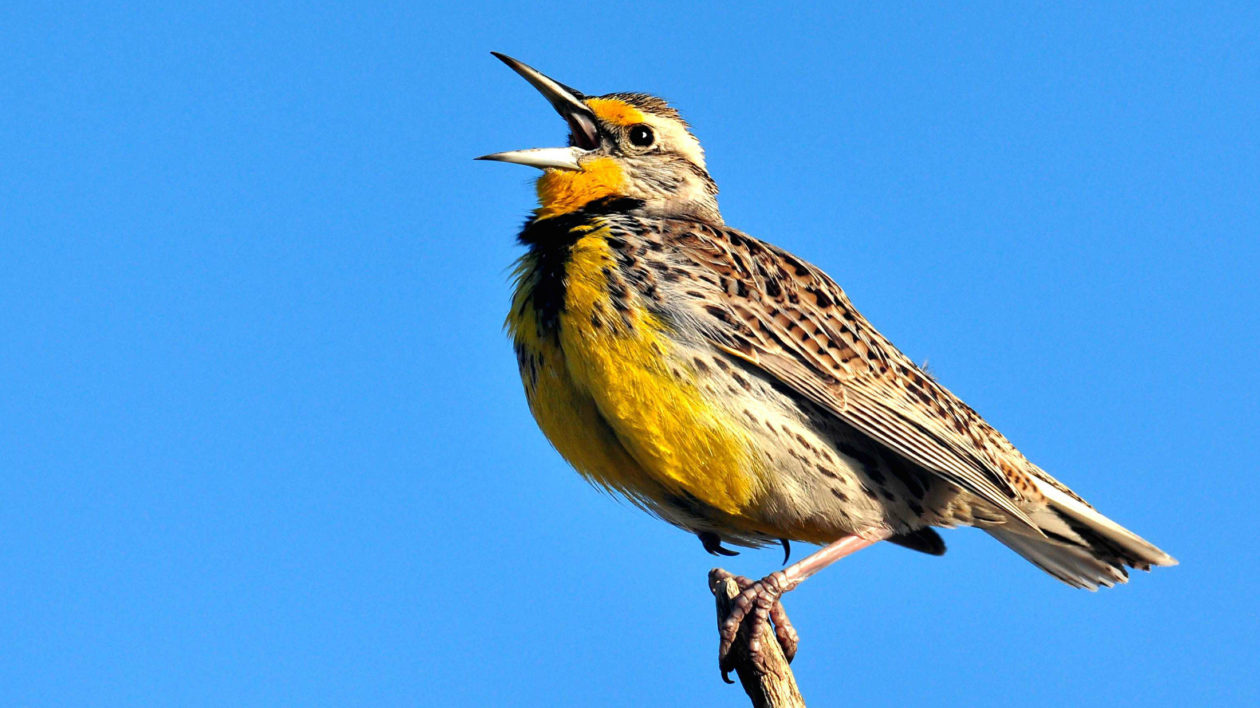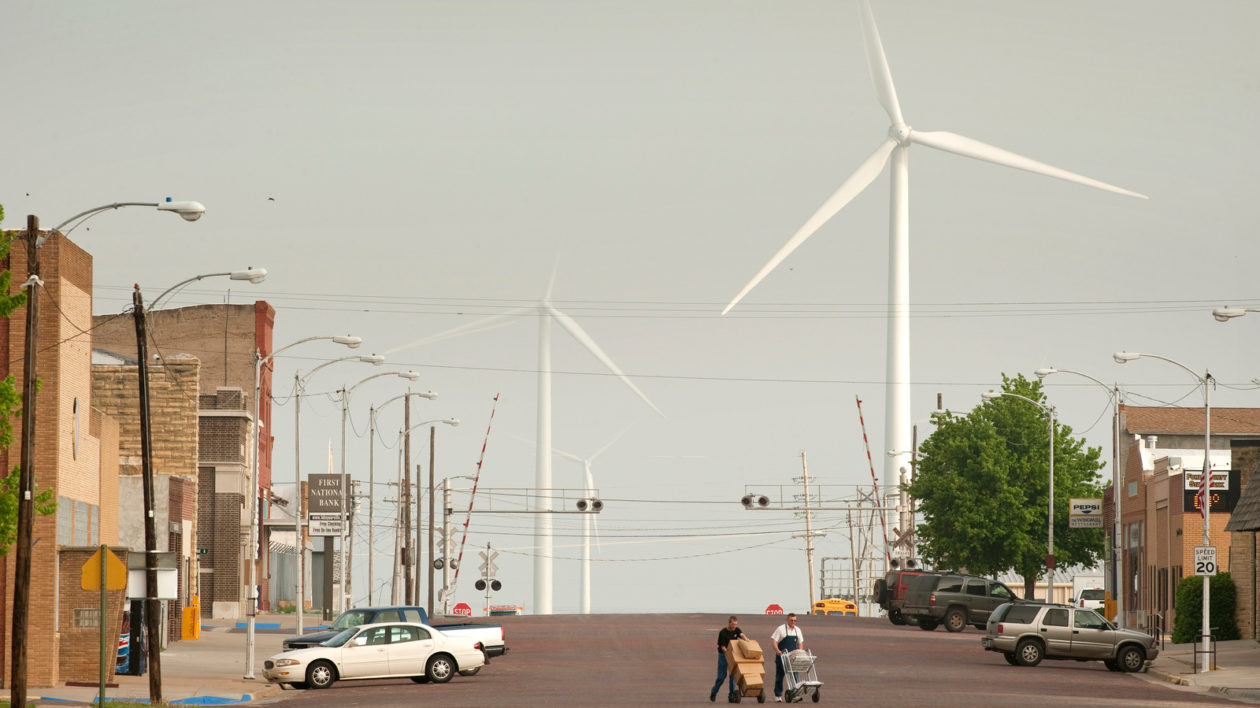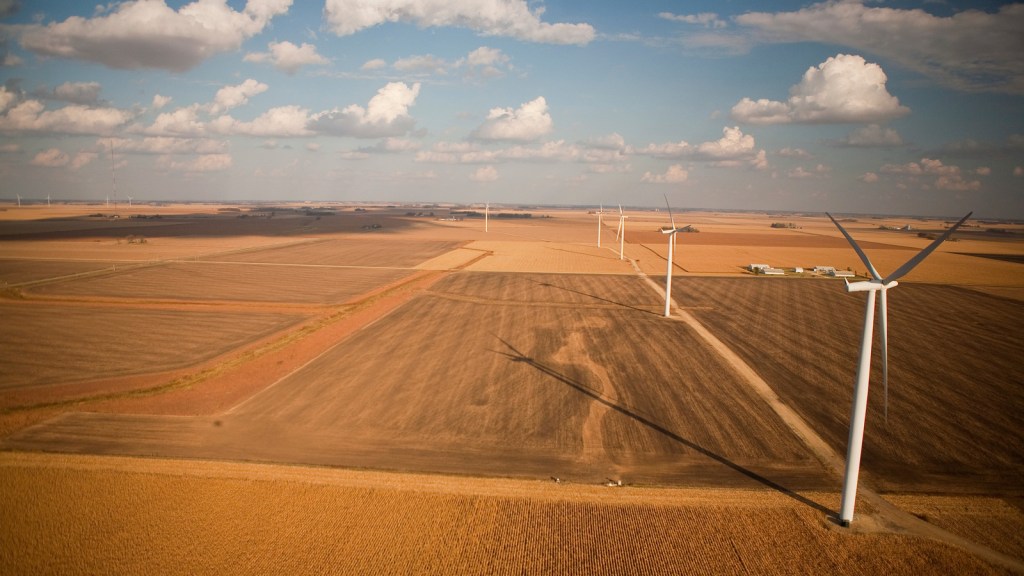When you’ve stood in a sea of grass on the Great Plains, as I have, it’s hard to forget the lilting chorus of bird song. All the whistles, trills and tzeets magically harmonize to fill that open sky with a sound like no place else on Earth.
There’s the tinkling effervescence of the horned lark. A bobolink’s sweet effusive babble. That buzzing somewhere in the grass? It’s the grasshopper sparrow – a little brown jobbie that really looks like a grasshopper in flight. And then there’s the show favorite – the ebullient melody of the Western meadowlark.
The list goes on, but you get the idea: The prairies of the vast North American interior come alive with spring song as birds claim territories and attract mates. These are largely working grasslands, places where livestock graze on native grasses in much the same way that bison once did.
If you stand in the right place, no matter the season, you’ll hear something else out there. It’s a sound that simply didn’t exist on the Great Plains in the not so distant past: A mechanical whoosh of rhythmic white noise. It’s what generating electricity sounds like when you walk, as I have, amid the spectacle of gleaming white wind turbines standing like giants on the open prairie.
A Windy Land
In a startling shift from the days of Big Coal, wind turbines are now the most economical form of new energy in the American Midwest. They’re bringing new investment and jobs to rural places struggling to diversify local economies while – and this is tremendously important – reducing carbon emissions. We need them in today’s energy landscape.
In the U.S., wind turbines now have the capacity to electrify 20 million average homes – only China has more. At eight percent of the nation’s electrical generation capacity, wind is the leading renewable. More and more wind turbines come online every year, inching the industry ever closer to a U.S. Department of Energy vision: Produce 35 percent of the nation’s energy portfolio by 2050. Naturally enough, much of the nation’s wind energy potential lies in the Great Plains, the Saudi Arabia of Wind.
It comes by the nickname honestly. The National Renewable Energy Laboratory reports that a wind turbine 80 meters tall generally pencils out wherever annual wind speeds average just over 14 miles per hour. Well, hold on to your hat: That includes virtually the entire sweep of the Great Plains. Certain locales spike even higher.

The Footprint Problem
There’s something we need to talk about, however. For the energy they produce, wind turbines have a disproportionately large footprint on the land. At 72.1 square kilometers per terawatt, wind’s footprint is bigger than natural gas, or coal or petroleum (at 18.6, 9.7 and 44.7, respectively). Ethanol from corn comes in at 347.1 megawatts per acre. It may come as a surprise, but wind’s exceedingly low-carbon energy doesn’t make its environmental footprint go away.
When industry puts up wind turbines in healthy prairie grasslands, nature takes notice. Remember the songbird chorus of the prairie spring? Research shows those bird species tend to avoid these giant wind turbines. Seven of the nine bird species in one study were less abundant within 300 meters of wind turbines in otherwise healthy grassland prairie. (In the interest of full disclosure, I served as a summer field crew leader on that U.S. Geological Survey study, now published in Conservation Biology.) U.S. Fish and Wildlife Service research appearing in the Journal of Wildlife Management reports a reduction in the number of nesting ducks, such as mallards and Northern pintails, using ponds near wind turbines.
Grasslands are already North America’s – and the planet’s – most threatened and least-protected biome. Less than four percent of the America’s tallgrass prairie remains. The continent’s grassland birds are declining more rapidly than shorebirds, forest songbirds, or any others, for that matter. There’s also a considerable body of research examining the very real risk of bird- and bat-strikes from wind turbine blades.
As wind energy scales up, we’ve got to do it right.
The continent’s most intact prairies glimmer with hope – they show us why conservation matters. Kansas’ Flint Hills are a stronghold for sensitive greater prairie chickens. A giant swath of rock-strewn prairie and lush pothole lakes stretching across the Northern Plains – it’s known as the Missouri Coteau – still serves as the nation’s “duck factory.” Efforts by nonprofits, the U.S. Fish and Wildlife Service and other agencies have succeeded at protecting some grasslands through payments in exchange for conservation with willing landowners.
Some say American grasslands have endured three waves of catastrophic loss: First there was the sod-busting that led to the dustbowl of the Dirty Thirties. Then came the federal push to plant crops fencerow-to-fencerow in the 1970s. In recent years, a strong market for commodities such as corn and soybeans for biofuels, animal feed and foodstuffs led a renewed push to plow grassland. Will a surge of unplanned wind energy be the next?
It needn’t be. As wind energy scales up, we’ve got to do it right. We need mechanisms in place that ensure wind farms don’t sprawl into natural lands – as in the unbroken prairie where meadowlarks and songbirds sing their springtime chorus and ducks line their nests with downy feathers. Instead, why not concentrate new wind farms in places that are already developed? Farm fields and former oil and gas installations, say, rather than native grasslands. This both saves habitat and lessens the risk of bird strikes.

Stopping the Sprawl
Want to know the good news? It’s possible. Research led by The Nature Conservancy’s Joe Kiesecker and colleagues shows the United States can meet its wind energy goals even if undisturbed lands like native prairie are left alone. In fact, the U.S. has a remarkable 14 times the amount of converted lands necessary to meet the Department of Energy’s goal of 20 percent by 2030.
“At TNC [The Nature Conservancy], we’re trying to face the challenge of energy sprawl by recognizing that a renewable energy future without a plan is not necessarily a green one. The idea is to get ahead of the problem by sketching out ways to reduce energy sprawl and to compensate for it in places where it’s inevitable,” Kiesecker says. “The key to making this approach work is by starting early to collaborate with governments and industry in order to come up with regional plans that keep as much biodiversity intact as possible.”
We have a choice. We can let wind energy development proceed at as it has so far, with little thought to the consequences for America’s grasslands. Or we can listen to the science. It can be our guide as we work together to care for the prairies even as wind energy ramps up to meet a pressing demand for low-carbon energy.





It’s good to see more people admitting that this is a BIG problem instead of the usual claptrap about how “beautiful” all this new sprawl is. And we’ve only see the beginning of it if ambitious goals are pursued.
No other technology this big would be green-lighted to invade so much open space, and fossil fuels are burned at every step of construction, with endless maintenance and replacement parts following on.
The blight just isn’t worth it, even if wind power did what it claimed for emissions (not even close). Add bird & bat deaths and you’ve got more strikes, plus noise, which is also denied as a problem by wind shills.
https://www.google.com/search?q=blight+for+naught
When we first began spying these gargantuan power poles, my wife – my very liberal wife – described the effect as “raping the land.”
I’ve come to see them as the sort of thing a conquering foreign power would install, given no need to care at all about the locals.
It’s not just wind turbines, it’s the new gigantic power lines. And restricting the placement of any of these things to “already built” areas is sidestepping the issue to a huge degree. I live in Minnesota, drive frequently through Wisconsin. and what I’m seeing is the death of the American landscape, mainly in what I’m sure would be categorized as already built areas. What I used to reassure myself were timeless and eternal vistas are becoming unavoidable industrial landscapes with a little landscape in the background.
I don’t know what the cost will be to the American soul but it can’t be good. And given that all this is produced by a hard-to-define and vaguely noble network of non-profits, government and industry, I don’t trust the decisions being made even as I see no way to affect the process.
I’d like to claim there’s a lot of anger building about this but all I can really say is, I hope there is.
I’ve seen wind turbines used in Europe that look like box kites, with the blades vertical and taking up much less air space then the propeller models. Seems like they might catch the wind better as well. Is this another possibility?
The effort now is to educate the public by showing the alternative to a grim future. When the future looks depressing people give up. Find a mascot such as a species disrupted by wind turbines to be a cute messenger to show a better way. Get kids involved , get Disney involved!
Yesterday’s solution is today’s problem, which implies that today’s solution is tomorrow’s problem. This seems depressing, but is really empowering. It means that we improvise, adapt and overcome with each new thing. We know we are alive when we still have problems.
That comment is delusional, but not surprising, given the fervor surrounding wind power. You need to accept that it’s the biggest form of sprawl ever invented. You can’t hide it on some other planet, and I’m not energized by the mere fact that it’s a problem!
Excellent article. There was an outcry against wind turbines lining the Horicon Marsh in Wisconsin, but they were put there anyway. It’s a Wetland of International Importance for birds and very close to a large cave where bats hibernate. Why not put them in nearby farm fields instead of on a major bird flyway?
Unfortunately the article reaches a highly flawed conclusion by only talking about disturbed lands and not the scenery they disturb all around them. Wind turbines are too tall to blend in, including the artificial night skies they create.
https://www.google.com/search?q=windschmerz